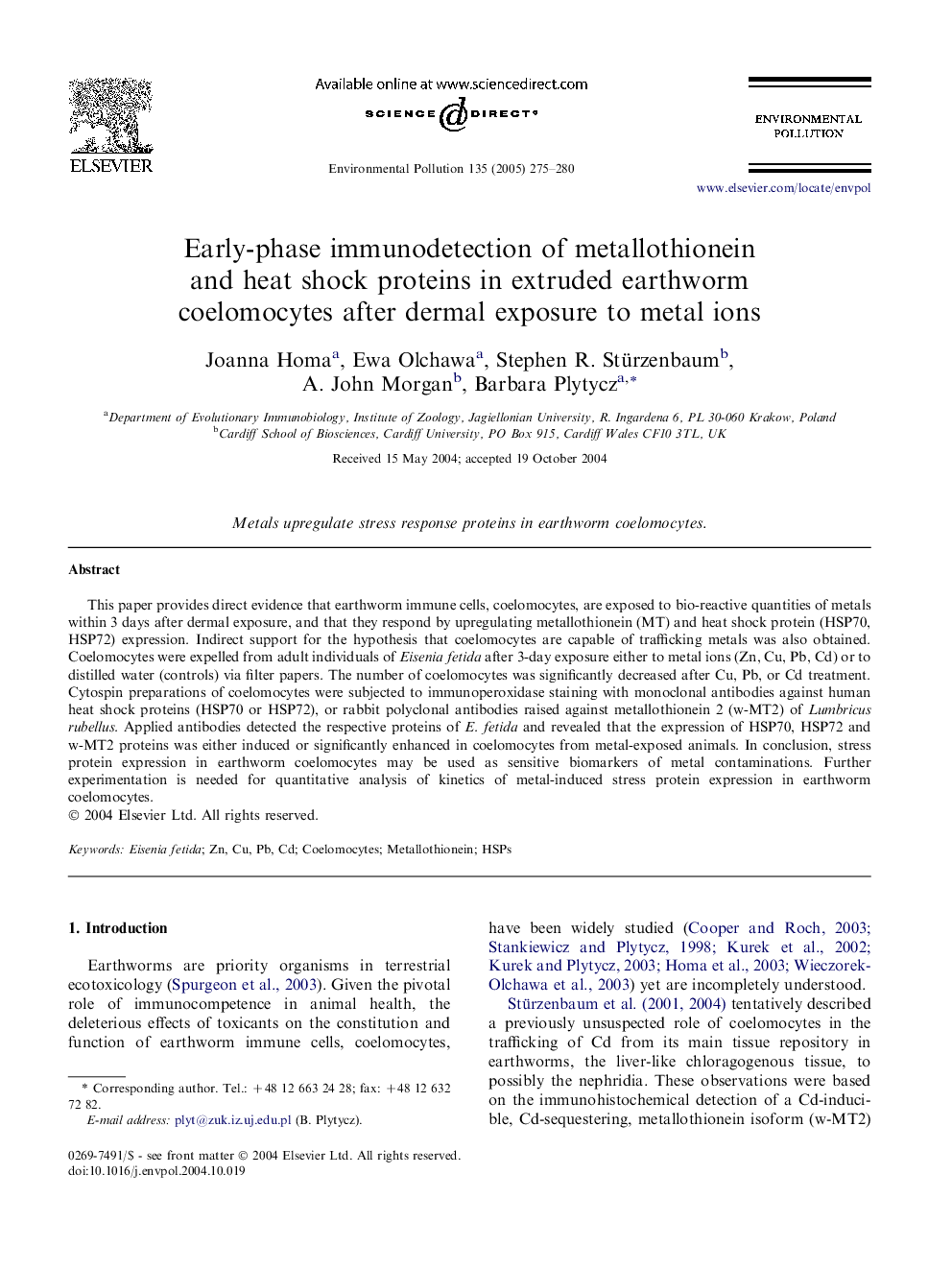| Article ID | Journal | Published Year | Pages | File Type |
|---|---|---|---|---|
| 9456538 | Environmental Pollution | 2005 | 6 Pages |
Abstract
This paper provides direct evidence that earthworm immune cells, coelomocytes, are exposed to bio-reactive quantities of metals within 3 days after dermal exposure, and that they respond by upregulating metallothionein (MT) and heat shock protein (HSP70, HSP72) expression. Indirect support for the hypothesis that coelomocytes are capable of trafficking metals was also obtained. Coelomocytes were expelled from adult individuals of Eisenia fetida after 3-day exposure either to metal ions (Zn, Cu, Pb, Cd) or to distilled water (controls) via filter papers. The number of coelomocytes was significantly decreased after Cu, Pb, or Cd treatment. Cytospin preparations of coelomocytes were subjected to immunoperoxidase staining with monoclonal antibodies against human heat shock proteins (HSP70 or HSP72), or rabbit polyclonal antibodies raised against metallothionein 2 (w-MT2) of Lumbricus rubellus. Applied antibodies detected the respective proteins of E. fetida and revealed that the expression of HSP70, HSP72 and w-MT2 proteins was either induced or significantly enhanced in coelomocytes from metal-exposed animals. In conclusion, stress protein expression in earthworm coelomocytes may be used as sensitive biomarkers of metal contaminations. Further experimentation is needed for quantitative analysis of kinetics of metal-induced stress protein expression in earthworm coelomocytes.
Related Topics
Life Sciences
Environmental Science
Environmental Chemistry
Authors
Joanna Homa, Ewa Olchawa, Stephen R. Stürzenbaum, A. John Morgan, Barbara Plytycz,
